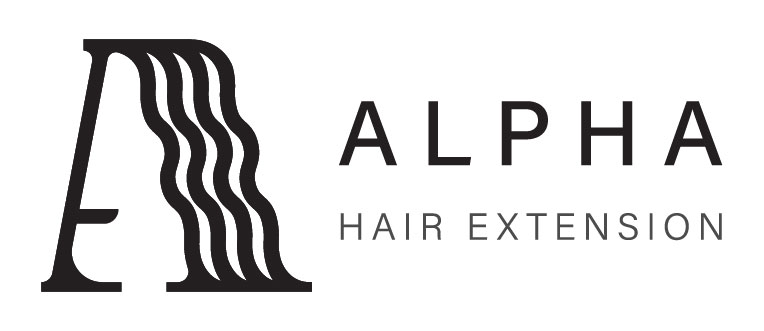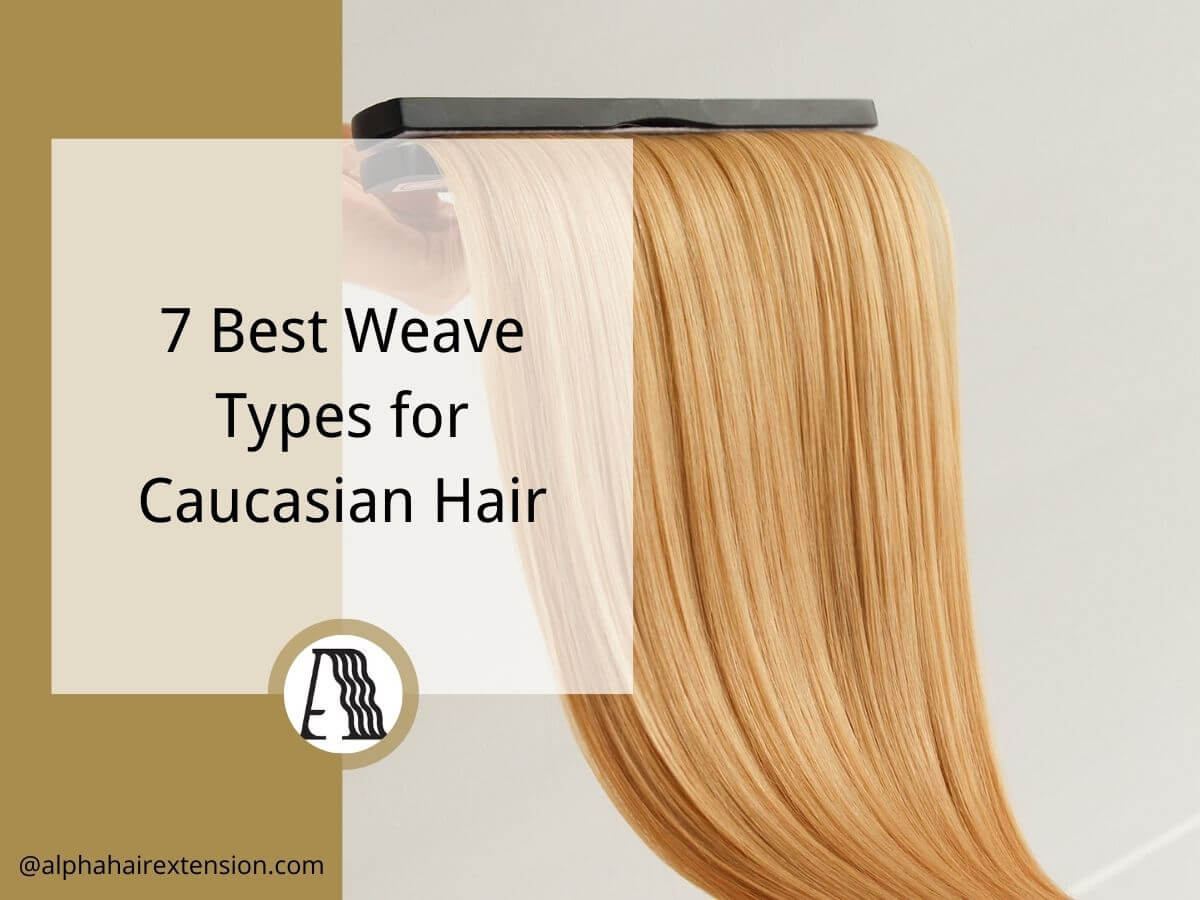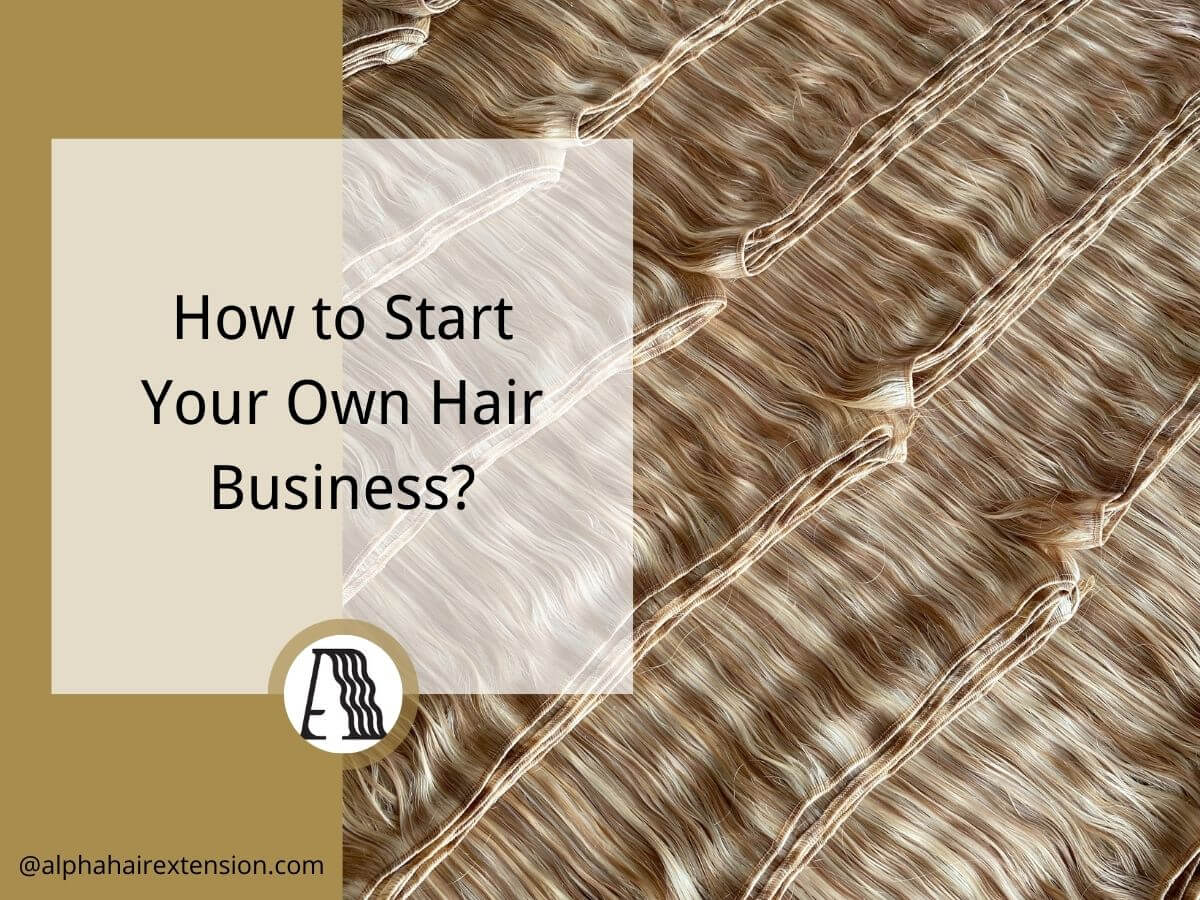I remember the first time I had to choose between Chinese hair and Indian hair. I had my brand idea, suppliers lined up, and customers waiting—but I didn’t know which hair type would be a better fit for my market.
Some suppliers swore by Chinese hair for its thickness and price. Others pushed Indian hair for its softness and natural look. I felt stuck.
Over the years, I’ve worked with hair brands, salons, and online sellers—helping them avoid costly mistakes and find the right source. I’ve seen what works for bulk orders, what holds up under private labeling, and what customers actually want.
This article is a clear comparison between Chinese hair and Indian hair. You’ll learn how they differ in quality, texture, price, sourcing, and reliability.
By the end, you’ll have the tools to decide which one fits your business best.
So let’s get down to it!
1. What is Chinese Hair?
If you’re searching for the right hair for your business, salon, or personal use, you’ve probably seen Chinese hair mentioned a lot. It’s widely available, straight, and smooth—but is it the right choice for you?
Maybe you need long-lasting hair for styling. Maybe you want hair that’s easy to maintain. Or maybe you’re looking for the best option to sell. No matter your reason, knowing the details can help you avoid costly mistakes.
Let’s break down what makes Chinese hair different, how it’s sourced, and what you need to watch out for.
Characteristics of Chinese Hair
Chinese hair has a distinct texture and feel. If you’ve ever touched it, you’ll notice:
- It’s thick and straight – The strands are naturally round and coarse.
- It’s smooth and sleek – It has a polished, silky finish.
- It’s strong and durable – Thicker strands hold up well over time.
- It’s less porous – It doesn’t absorb moisture easily, making it resistant to frizz but sometimes stiff.
Because of these traits, Chinese hair is often used for bone-straight styles or heavily processed into different textures.
How Is Chinese Hair Collected?
You might wonder—where does this hair actually come from?
Most Chinese hair comes from 2 main sources:
- Voluntary Donors – Some women, especially in rural areas, sell their long hair for extra income. This hair is usually stronger and healthier because it has been well-maintained.
- Factory Collection – Some factories gather hair from salon floors, combs, or fallen strands. This is often called “floor hair” and is lower in quality because it’s mixed from different sources.
The way hair is collected affects its strength, durability, and price. High-quality hair from donors lasts longer than mixed factory hair.
How Is Chinese Hair Processed?
To create a uniform look, most Chinese hair undergoes processing:
- Chemical Treatments – Factories may bleach, dye, or coat the hair in silicone to create a shinier, smoother appearance.
- Straightening – Even though Chinese hair is naturally straight, heat treatments may be used to enhance its sleekness.
- Cuticle Removal – Some manufacturers remove the cuticle layer to reduce tangling. This makes the hair smoother but can also make it more fragile over time.
Because of this processing, not all Chinese hair is the same. Some are raw and untreated, while others are chemically altered to achieve a certain look. If you’re buying, always ask how the hair has been processed.
Pros & Cons of Chinese Hair
Pros
- Affordable – One of the most budget-friendly options.
- Naturally straight and sleek – Ideal for smooth, polished styles.
- Strong and durable – Thick strands last longer.
- Good for high-heat styling – Can handle flat irons well.
Cons
- Can feel stiff – Less movement compared to softer hair types.
- Hard to curl – Doesn’t hold waves as well.
- Often processed – Some treatments can shorten the lifespan.
- May not blend well – If you or your clients have finer or curlier hair, Chinese hair may not mix naturally.
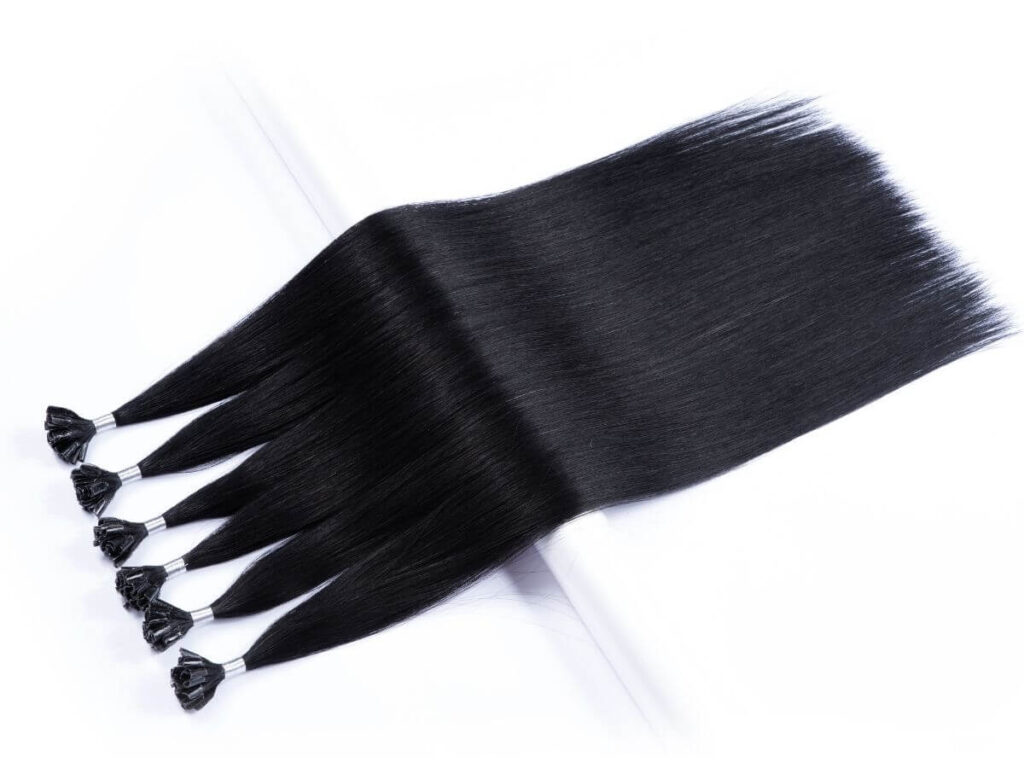
2. What Is Indian Hair?
The first time I worked with Indian hair, I was surprised. It felt light but full, soft yet strong. The texture had a natural movement that blended well with many hair types.
A stylist once told me, “This hair just flows. It holds a curl, but it also straightens easily.” She was right. Indian hair is one of the most versatile types available. But is it the right choice for you?
Let’s take a closer look at its texture, how it’s collected, and how it compares to other options.
Characteristics of Indian Hair
Indian hair is known for its soft, natural movement. It has a unique texture that works well for different hairstyles. Here’s what you can expect
- Medium to fine strands – Lighter and thinner than Chinese hair but still strong.
- Natural wave or curl – Most Indian hair has a slight wave, making it easy to style.
- Soft and bouncy – It moves naturally, giving it a lightweight feel.
- Blends well – Works with many hair types, from straight to curly.
One thing to note—Indian hair is rarely bone-straight. If you’re looking for silky, pin-straight hair, Chinese hair might be a better fit.
How Is Indian Hair Collected?
Unlike some types of hair, Indian hair is mostly collected from temples. This process is called temple hair donation.
Here’s how it works:
- Religious Offering – Many Indian women donate their hair in temples as a sign of devotion. It’s part of a spiritual ritual, not a commercial sale.
- Auctioned by Temples – The temples then sell the hair to manufacturers, and the money is used for community programs.
- Sorted and Processed – The best-quality hair is selected and prepared for buyers.
This is why Indian hair is often high quality. Since it comes from willing donors who have cared for their hair, it is usually healthy and unprocessed.
But not all Indian hair is collected this way. Some factories also gather fallen hair from brushes, salon floors, or loose strands. This lower-quality hair is often treated heavily to make it look smooth, but it doesn’t last as long.
How Is Indian Hair Processed?
Not all Indian hair is processed the same way. It depends on whether the hair is raw, virgin, or chemically treated.
- Raw Indian Hair – Completely unprocessed, natural, and high quality.
- Virgin Indian Hair – May be washed and treated lightly but remains uncolored and unprocessed.
- Chemically Processed Hair – Sometimes bleached, permed, or straightened to create different textures.
Most buyers prefer raw or virgin Indian hair because it lasts longer and holds styles well.
Pros & Cons of Indian Hair
Pros
- Soft and lightweight – Feels natural and blends well.
- Versatile – Can be worn straight, wavy, or curled.
- Long-lasting – High-quality Indian hair can last for years.
- Natural texture – Has movement and body.
Cons
- Not naturally straight – Needs heat to stay sleek.
- More expensive – High-quality Indian hair costs more than processed alternatives.
- Can tangle if untreated – Some raw hair needs extra care.
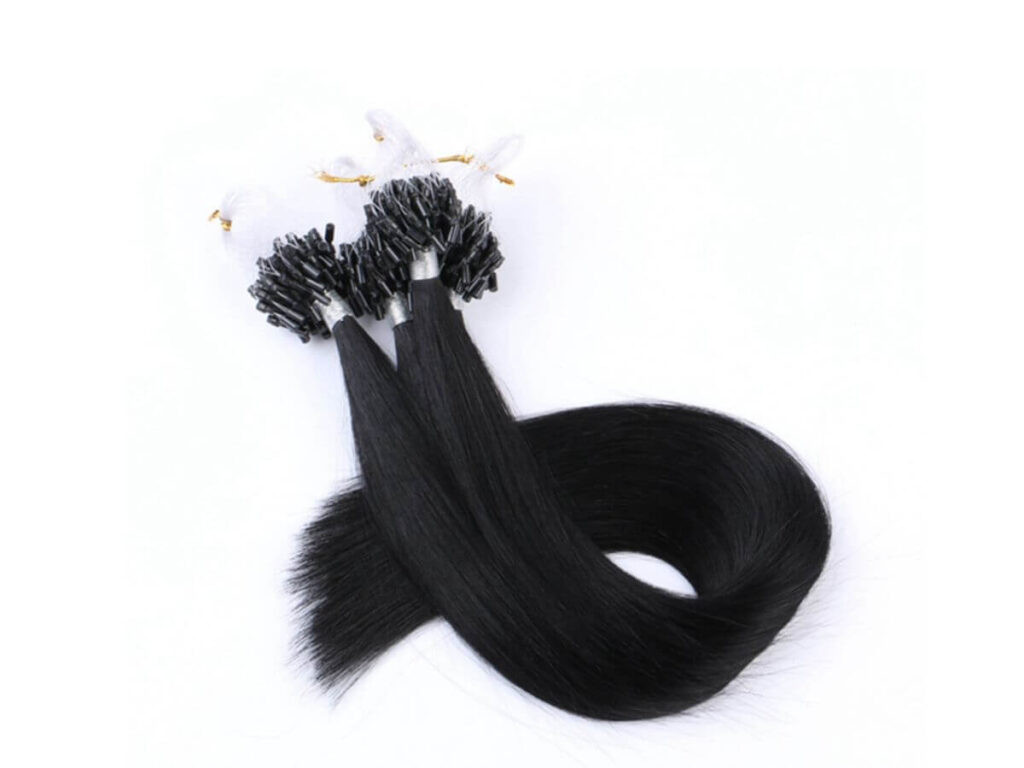
3. Key Differences Between Chinese Hair and Indian Hair
The first time I worked with Chinese and Indian hair, I thought they were similar. But after styling, washing, and testing them, I realized—they perform very differently.
If you’ve ever bought hair that didn’t hold curls or felt too stiff, you know how frustrating it can be for our customers. Choosing the right type is key. Here’s a quick side-by-side comparison to help you decide for your business.
| Feature | Chinese Hair | Indian Hair |
| Texture | Naturally straight, thick, and smooth | Naturally wavy to curly, soft, and bouncy |
| Density | Heavier, has more weight, less flexible | Lightweight with natural movement, airy feel |
| Strand Thickness | Thicker, coarser strands | Medium to fine strands, soft to the touch |
| Styling Versatility | Best for sleek, bone-straight styles, harder to curl | Holds curls and waves well, blends with various textures |
| Shine | Lower shine, smooth but not overly silky | Higher shine, has a natural luster and bounce |
| Durability | Strong and long-lasting with proper care, resistant to breakage | Softer but still durable, adapts to different styles over time |
| Reaction to Heat | Handles heat styling well, but needs high heat to curl | Responds well to heat, can be styled straight or curly easily |
| Reaction to Humidity | Less porous, doesn’t absorb much moisture, stays sleek | More porous, absorbs moisture, can frizz or curl slightly in humidity |
| Blending Ability | Doesn’t blend well with fine or curly textures | Blends naturally with most hair types, from straight to coily |
| Maintenance | Requires less styling but can feel stiff over time | Needs more care but remains soft and natural-looking |
| Lifespan | Can last up to 1-2 years with proper care | Can last 2+ years with good maintenance |
| Processing Level | Often chemically processed to create different textures | Mostly raw or lightly processed, maintains its natural state |
| Price | More affordable, widely available | More expensive due to high demand and sourcing process |
4. Factors to Consider When Choosing Between Chinese and Indian Hair
Selecting the right hair type is more than just a purchase—it’s a business decision. Whether you’re running a salon, supplying hair to retailers, or selling online, the wrong choice can lead to dissatisfied customers, returns, and lost revenue.
But how do you decide? Chinese hair and Indian hair serve different purposes. Understanding the key factors will help you make the right investment.
#1 Hair Purpose & End-Use
Look for hair that aligns with your market. For bulk sales, Chinese hair is the best choice. It’s widely available, cost-effective, and easy to source in large quantities—ideal for e-commerce and dropshipping. Indian hair appeals to high-end buyers who prioritize natural texture and long-term wear.
For salons, Chinese hair delivers sleek, polished styles with minimal effort, while Indian hair works well for clients who want bouncy, textured looks.
#2 Hair Quality & Processing Level
Choose based on durability. Chinese hair is thicker and stronger, making it highly resistant to breakage. It’s processed for a smooth, uniform look, perfect for businesses needing consistency. Indian hair, while soft and natural, requires more maintenance to prevent tangling.
#3 Texture & Styling Versatility
Look for styling ease. Chinese hair stays straight effortlessly, making it great for everyday sleek styles. Indian hair holds curls and waves better but needs more upkeep.
#4 Bleaching & Coloring Ability
Choose hair that suits your color offerings. Chinese hair holds deep, rich tones well and maintains shine after coloring. Indian hair lifts to lighter shades like blonde (#613) more easily but weakens with processing. If you focus on long-lasting, dark, glossy colors, Chinese hair is the better option for business.
Conclusion
That customer who called me about the tangled hair? She learned the difference after she bought it. But you don’t have to make that mistake.
Now you know. Chinese hair is sleek, durable, and perfect for bulk sales. Indian hair is soft, versatile, and great for textured styles. Your choice depends on what works best for your business.
So, what’s your next move? Will you go for high-volume efficiency or premium flexibility?
If you need expert guidance, let’s talk. Contact us today.
Explore More of Our Resources
There’s more to explore! Check out our additional product selections to find exactly what you’re looking for:
Still haven’t found what you’re looking for? Don’t hesitate to contact us. We’re available around the clock to assist you.
